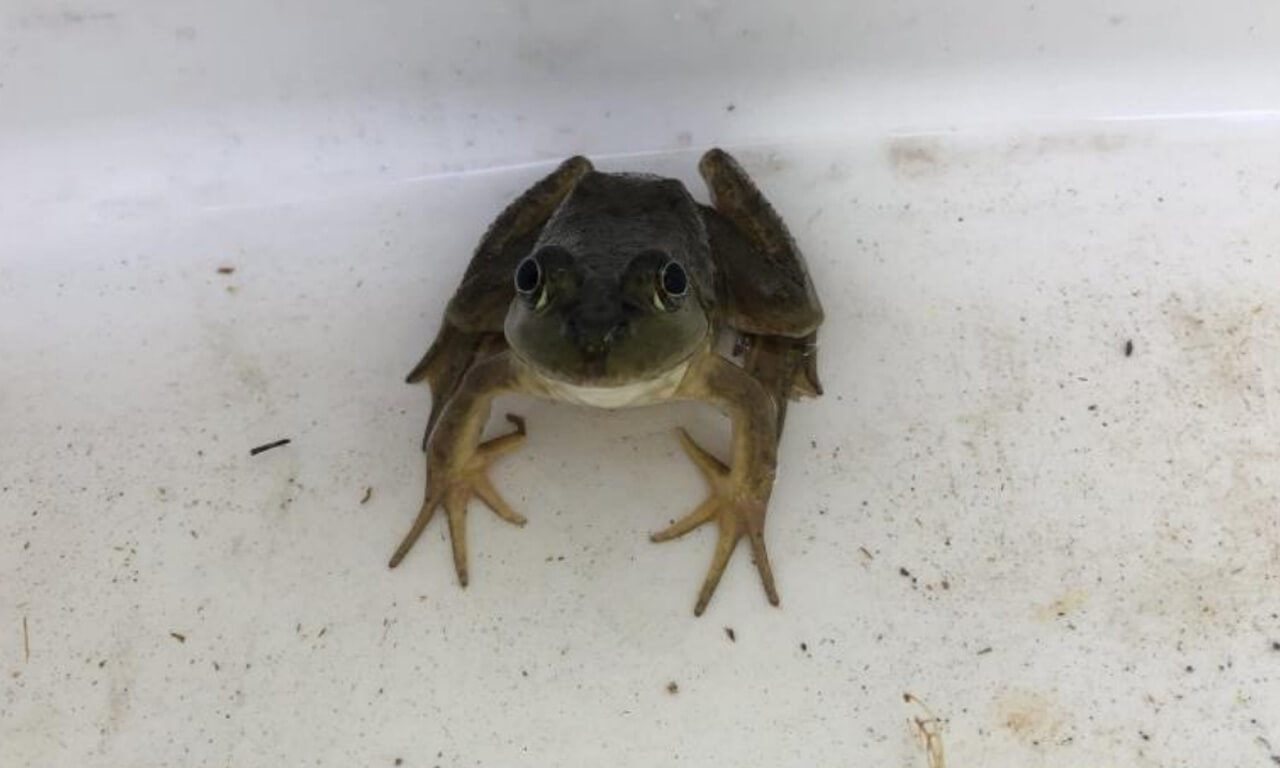The Boulder County Parks & Open Space Department offers grants for research on county open space lands each year. All proposals are reviewed by a team of resource specialists, and awarded research projects are monitored during their activities on open space.
The following is a summary of a 2018 study conducted by Kelly Triece, Joseph Ehrenberger, and Norma Davenport of Adaptation Environmental Services. Their project focused on bullfrog management on the Front Range.
Introduction
Invasive species pose a significant threat to the world’s biological diversity (Chapin et al. 2000). American Bullfrogs are one of the most ecologically destructive of invasive alien vertebrate species in the region (Kraus, 2009 & CABI, 2011). Bullfrogs have been documented to eat small fish, young ducklings, sparrows, snakes, wood ducks, and amphibians (Stewart 1967, Hewitt 1950, McAtee 1921, Wright 1920).
In particular they have been documented to predate a Colorado species of greatest conservation need, the Northern Leopard Frog (Lithobates pipiens) (McAlpine and Dilworth 1989, Leonard et al. 1993) and the Federal endangered species, Preble’s Meadow Jumping Mouse (Trainor et al. 2007). In some lowland areas of Colorado (Hammerson 1999) and elsewhere (Lannoo et al. 1994), Northern Leopard Frog population reductions or extirpations have been associated with the presence of the increasingly abundant American Bullfrog (Hammerson 1982, Johnson et al. 2011), with both larval and adult life stages negatively impacting Northern Leopard Frogs (Hammerson 1999). American bullfrogs have negative effects on native wildlife due to predation, competition and transmission of disease (Kates and Ferrer 2003, Schwalbe and Rosen 1988).
A plan to strategically eliminate isolated bullfrog populations and disrupt metapopulation dynamics is key for success (Orchard 2011, Akins and Jones 2013). Our first step is to identify the most effective techniques for removal and determine how to maximize cost effectiveness. We identified two techniques for the purposes of this project, funnel traps and bucket traps with glow sticks and bait. Funnel traps aim to capture larval bullfrogs, while bucket traps aim to capture five adults. A third technique, hand-capture, was used at the end of the season due to low results from funnel traps and bucket traps. This technique is aimed at capturing metamorphs and adults.
This project was part of an interagency grant to Adaptation Environmental Services (AES) with Boulder County Parks and Open Space (BCPOS), City of Boulder Open Space and Mountain Parks (OSMP), and Jefferson County Open Space (JCOS). One additional agency, the City of Longmont, was also part of the project.
Our 2018 objectives were:
- To investigate bullfrog management methods by:
- Assessing the effectiveness of the funnel trap, bucket trap techniques and hand capture.
- Determining how best to maximize cost-efficiency per removal technique.
- To share our goals, efforts, and results with other professionals at one or more conferences.
Testing these techniques will create expectations for effectiveness and cost, and work in conjunction with existing agency efforts for management goals. This requires close collaboration and organization with neighboring land managers.


